Josh Byrne is a permaculture pioneer who shares part of his story of how he came to embrace permaculture and how it has changed his outer, and inner, landscapes…
Josh Byrne is an environmental scientist with a passion for sustainable gardening, appropriate technology and innovative environmental design. Best known for his role as the WA presenter and writer for ABC’s Gardening Australia TV program and magazine, Josh is also engaged in research, teaching and consultancy work in the areas of sustainable landscape design and urban water management. He is an Ambassador for a number of community and government sustainability initiatives including the national Smart Approved Water Mark program and the WA State Government’s Living Smart Household Sustainability Program and Nature Play initiative. He is also a Patron for the Conservation Council of WA, the Organic Association of WA and Sustainable Gardening Australia. Alongside gardening, his hobbies include cooking and travel. He lives in Fremantle with his partner Kellie and two children.
I discovered the magic of gardening at an early age, looking after Dad’s herbs at home. As a keen cook, he kept quite a collection. There must have been thirty different varieties with each one growing in an individual terracotta pot, neatly lined up in rows on a tiered planter shelf. It was my job to keep them in top shape. Hand watering was a daily task in Perth’s hot, dry summer. Regular feeding to keep the growth soft and palatable, and occasional re-potting, division and replanting – all simple tasks that made a big impact on me. These were the first things that I nurtured and the result of these efforts ended up in our dinner most evenings.
My next garden project was a bit more ambitious. At fourteen I set up a four-square-metre ‘no-dig’ vegie patch on top of the lawn in our backyard. I was fascinated by how a few bales of straw, a load of compost and a handful of seeds could be converted into bundles of fresh vegetables within a matter of months.
I often tell people that growing food is highly infectious. Once you make a start the sense of satisfaction and reward is overwhelming. I can still vividly recall the moment when it really hit me. It was late one warm afternoon and I had been working in my little patch, which by this stage had expanded to include a number of large tubs filled with tomatoes and climbing beans trailing along the fence. I sat on the lawn, leaning back against the warm red brick wall of our shed and basked in the contentment and satisfaction with what I had created. From that point on I’ve considered myself a gardener.
Dad picked up on my new fascination with gardening. As a keen book collector he was thrilled to see me fossicking in second hand book shops as I slowly developed a collection of my own. One evening he gave me two books that he had bought years before and tucked away in a forgotten section of his library. They were first edition copies of Permaculture One and Permaculture Two. They made immediate sense to me. The ideas were logical, the principles were practical and the ethical basis underpinning it all was fair and just.
The more I read, the more I started to question things, especially life in a comfortable suburb, living in high energy, wasteful homes, surrounded by high maintenance unproductive landscapes. It was all wrong. Clearly there must be a better way to do it.
I realised that I needed to learn more about the natural world and the way that it worked. This realisation influenced my subject selection in high school and eventually led me to study environmental science at university, but it was always the practical aspects of permaculture that kept me inspired.
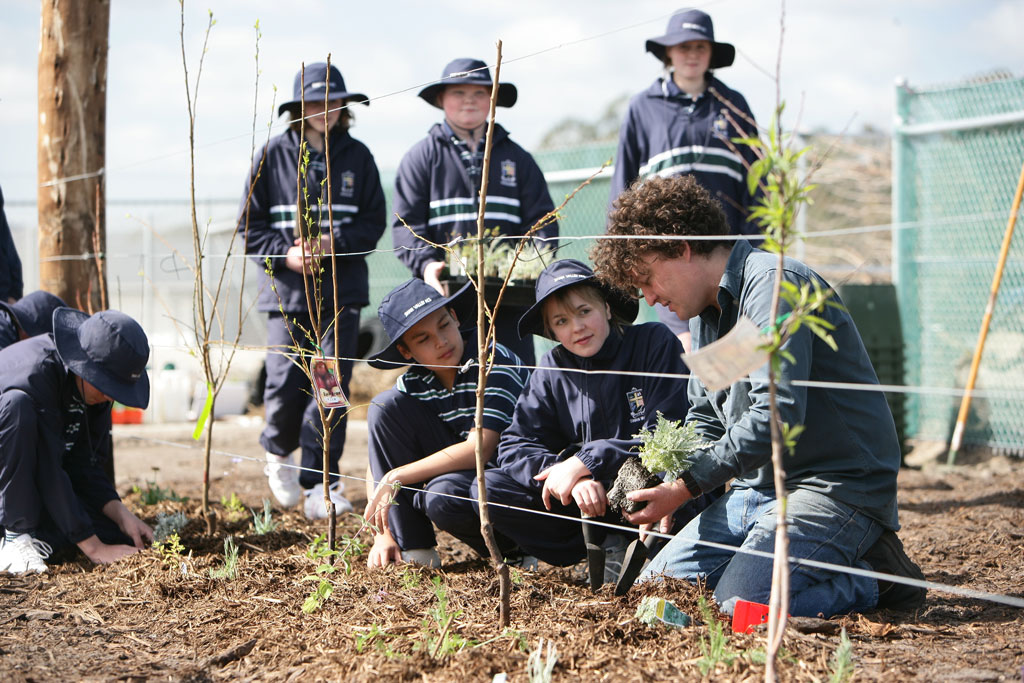
Suburban Permaculture
My interest in permaculture got a major boost at the age of nineteen when I stumbled across a neglected suburban block with potential. It was a classic run down rental property that still retained the features typical to the original 1950s homes in the area. There were old fruit trees, a hen shed, a dilapidated glass house and a workshop. There were remnant native species that, given their age, would have pre-dated the development of the area. It was like a time capsule. All around it, time had moved on. Dalkeith was now a prestigious riverside address noted for its leafy gardens and proximity to private schools. Meanwhile number 63 Circe Circle was still like something out of the BBC classic The Good Life.
My brother was renting the place with his mates. The first time I visited I thought to myself, “I’ve got to get this place!” Timing was on my side and it wasn’t long before he moved out and I moved in. And so began my first serious garden project.
Being my first rental property, I wasn’t exactly sure of what the rules were when it came to working in the garden. The place was a complete mess so I assumed that any work tidying up was bound to be appreciated. I started off tentatively. I was busy studying at university and was also running a part-time local gardening round, so my early efforts were mainly limited to exploring the various nooks and crannies of the block. Each session was like an archaeological dig. The more things I’d discovered including old tools and forgotten pathways, the more intrigued I became with the garden. It wasn’t long before I decided the best thing to do was to drop down to part-time study and take this project more seriously. Whether it was my growing passion for gardening or an avoidance strategy for chemistry and statistics is beside the point – it was the best thing I ever did.
Over the next six years, my housemates and I rejuvenated the property and created a remarkable garden that combined friendship, learning, fun with a real feeling of independence and self-reliance. We pulled the lawn up, repaired the glasshouse, repaired the sheds, installed a rainwater tank and set up trellises for growing fruit trees and vines. We built new pens for ducks and aviaries for pigeons and quail. We experimented with solar ovens and composting toilets, brewed beer and baked bread. It was brilliant.
Being poor students we learnt how to be resourceful with salvaged materials and created a space with rambling pathways, extended poultry runs, homemade garden seats, worm farms and compost bays. We basically overhauled the place and it wasn’t long until I actually felt as if the property was ours.
What we did buy, we bought locally. There was a small group of shops around the corner called the ‘Dalkeith Village’ which had been there (in more humble form) since the suburb began in the 1950s. There was a bakery, a little supermarket, a bottle shop, a nursery and even a small father-son owned hardware store where you could still buy individual nails. Of course they charged like a wounded bull, earning the proprietor the nickname ‘Old Man Fleece’ amongst my housemates, but that didn’t really matter. It was more important for us to know that we were supporting local businesses, which provided the convenience, comfort and security that we had what we needed near by.
In time we struck up great relationships with our elderly neighbours. Most had been there for some forty plus years and remembered a time when everyone had fruit trees and chooks in their backyard. I’m sure that they thought we were odd to start with, but when they realised we were really having a go, their interest grew. It wasn’t long before I was passing eggs and homegrown produce over the fence. In return they would make jams, give tips on the best local plant varieties and dear old Mrs James up the back would throw her scraps over for our chooks. There was a real sense of community.
My friends were also fascinated. When people visited they’d head straight for the chooks. At night I’d give tours by torchlight to explore the jungle like garden and spot frogs. Being born in the mid 1970s, we were part of a generation that didn’t automatically connect with gardening and self-reliance. Perhaps that was part of the buzz for me, in that we were doing something different – something inherently practical and something that just made sense.
Leaving the Backyard
In 1996, the 6th International Permaculture Conference (IPC6) was to be held in Perth, and with it a special Permaculture Design Course (PDC) was to be run involving a number of respected WA permaculturists as guest teachers. I’d been planning to do my PDC for a while, but as a student, time and cost were always an issue. Attending IPC6 was an opportunity too good to miss. I deferred from university for a semester, cranked up the gardening round to save up some money and registered for the design course and conference.
By this stage, I was confident with many of the practical aspects of permaculture from the hands-on skills that I had developed in my backyard and on my gardening round, but I was eager to explore new concepts in design and relate them to my academic studies. The PDC, conference and site tours that followed certainly provided this and made me realise that it was time to leave the comfort of my backyard and neighbourhood and expand my skill set by working on other projects.
As always an opportunity soon presented itself. One of the site tours we took during the PDC was to the Environmental Technology Centre at Murdoch University (the university where I was studying). It was a fascinating project which had been set up as a research and development facility to explore the applications of small-scale environmental technologies in the areas of water supply, sanitation, energy, shelter, and food production. The research group’s main focus at the time was the application of appropriate technologies for improved environmental health in remote indigenous communities, however they had also fostered an active local community group to help with the development of the 1.7-hectare site.
It was just what I was looking for – a fresh, practical learning environment at an exciting scale to develop new skills. The infrastructure was impressive including solar powered bores, a hybrid (wind and solar) remote area power system, composting toilets and a range of wastewater reuse systems. There were demonstration buildings made from strawbale and mud brick, and the beginnings of a productive landscape including aquaculture ponds, food forest and vegetable gardens.
I signed up as a volunteer and was soon spending most of my time there. My home garden was established and thriving and I was enjoying putting my energies into something different. Before long I was employed as site coordinator and spent the next five years managing the ongoing design and development of the site whilst completing my undergraduate degree.
Like many good projects we were under-funded financially but were able to achieve a great deal due to the commitment of staff, students and community volunteers. There was a strong shared vision for the importance of demonstrating low impact ways of living and increasing self-reliance. We ran Work for the Dole programs, hosted Corrective Services participants and kept the doors open for anyone who wanted to participate or learn about permaculture.
Alongside my site work, I was extremely fortunate to be mentored through a broad range of academic experiences. It was a unique situation where I was expected to teach, present at conferences and undertake field work around WA, all before graduating. This was possible thanks to a progressive group of academics who saw the value in practical experience, recognised passion and provided me with the opportunities to grow.
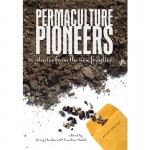
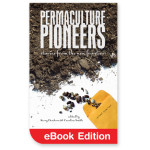 For the full chapter, along with stories from 23 other permies, grab yourself a copy of Permaculture Pioneers: stories from the new frontier as an eBook or soft cover book. Use the coupon code ‘pioneer’ in your cart and get 20% off the physical book price.
For the full chapter, along with stories from 23 other permies, grab yourself a copy of Permaculture Pioneers: stories from the new frontier as an eBook or soft cover book. Use the coupon code ‘pioneer’ in your cart and get 20% off the physical book price.
For more about Josh’s design pracice visit the website at Josh Byrne and Associates
Josh has also designed and co-ordinated the building of two a 10 star new homes on his property in Fremantle, Western Australia – for his family and sister in-law. Watch episode one of twelve below and visit Josh’s House website for more about this project.

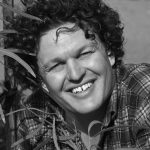
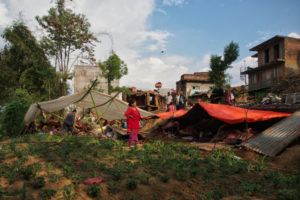


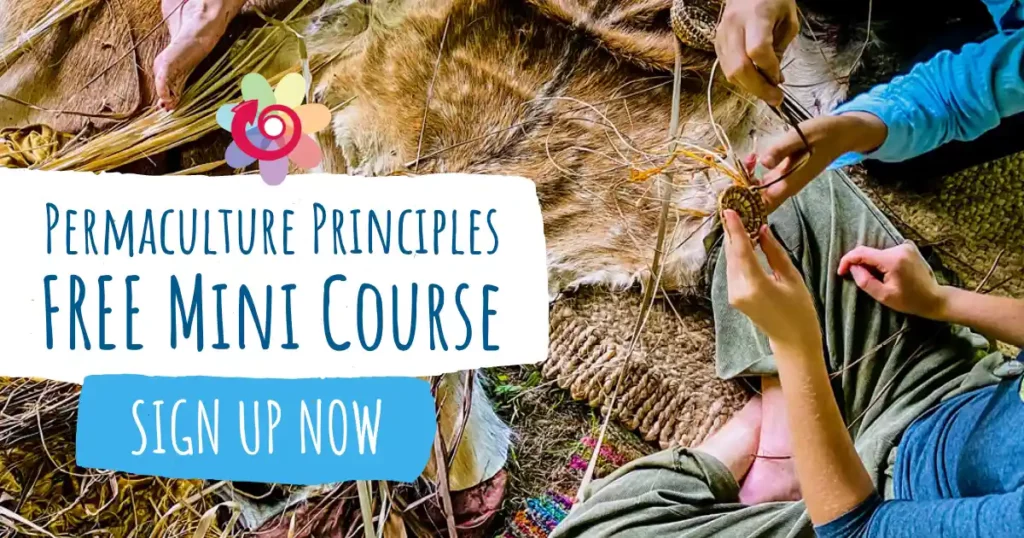
Hi Josh, it is great that you were able to make a career doing what you love! We need more people like you to spread knowledge and awareness about gardening and permaculture specially to the younger generation. Let us all promote sustainability!
I could really relate to your writing. Really interesting project at Murdoch University.
Well done son. We are having a go at Dapto High School. Drop in if you are ever on the east coast.